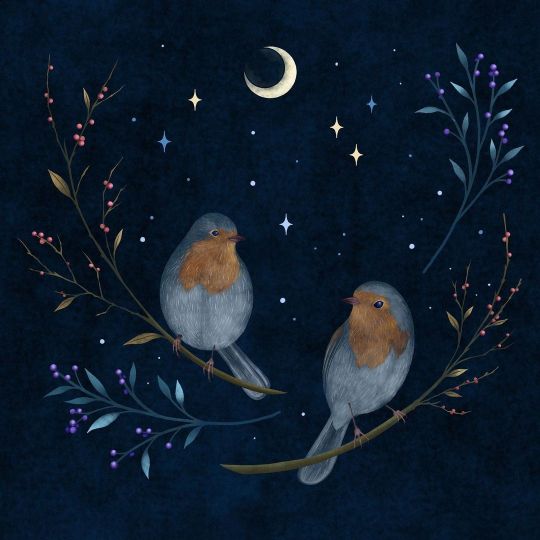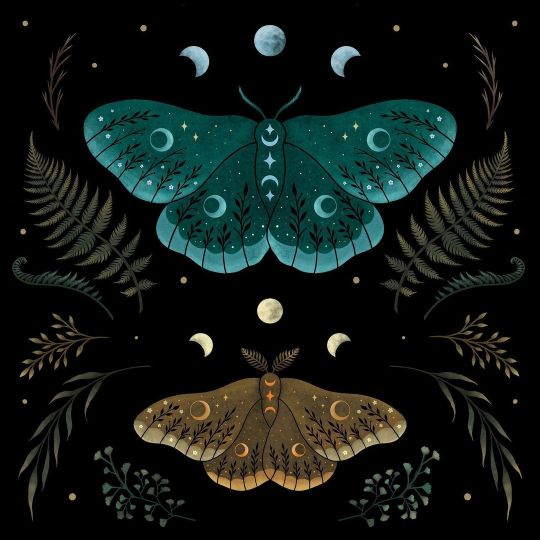Text
🌌 Witchcraft PSA: The Chakras & Cultural Appropriation ❌
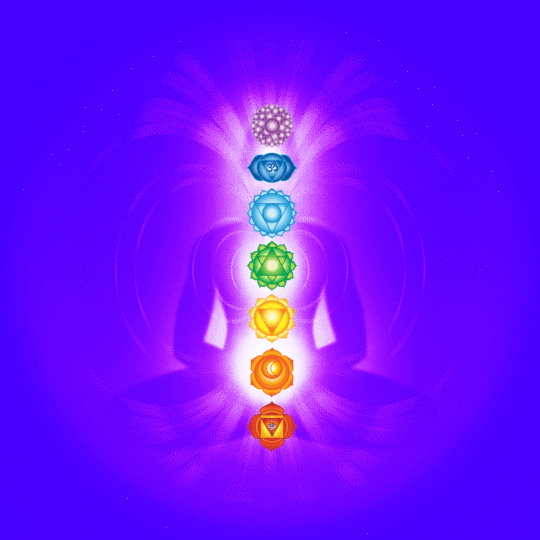
Warning: This is probably the longest post I've written so far, so be prepared for a VERY long read.
Disclaimer: I do not claim to be an expert, a historian, or a theologist. I am simply a witch, a student, and a POC living in the United States where many aspects of pagan spirituality are often appropriated from other cultures and perpetuated through simple ignorance. I'm sure this post will generate some type of controversy, but I do not mean to attack anyone or their beliefs with this post.
So. Here's the big one, guys. The post I've been dreading making but have really wanted to write for a while.
Cultural appropriation is one of the hottest topics in the modern witchcraft community, and the discourse about it on tumblr is far-reaching and incendiary at best. The problem: Where should witches draw a line between explorational spirituality and cultural appropriation?
I'm not here to lay down laws of morality. I'm not the cultural police. But I DID have a very eye-opening experience recently that led me to create this post.
I'm a white-passing minority, and I won't pretend that this doesn't lend me a degree of privilege in America. Especially as a witch, many doors are open to me. Just within the witchcraft community, I look white enough to be welcomed whole-heartedly into most neopagan circles. That's not to say that blatant racism is abundant within the pagan community, but we can't deny that many non-white cultural practices are heavily stigmatized. For instance, as SOON as any of my "light worker" friends hears that I have a family background in Santeria and Brujeria, the FIRST thing I hear is, "Oh, I don't mess with that dark stuff," or "Well, I don't like the idea of hurting animals and other people." And don't get me started on the ignorant conversations one of my dark-skinned, Vodou-practicing friends has had to sit through before.
Like, what?
Because of this, I'm often the first person within my social circles to stand up for cultural barriers and denounce cultural stigma. Above all else, I try to respect the hell out of closed cultures and educate myself about cultural appropriation.
So, it was much to my dismay when I discovered that I have been culturally appropriating the chakra system for the last 11 years of my witchcraft practice.
The chakra system and its use in western occultism is one of the most heavily debated topics in the witchblr community. A simple search will yield dozens upon dozens of posts, each filled with witches claiming that usage of the chakra system either IS or IS NOT appropriation. For the most part, I've tried to stay out of this debate. I've incorporated the chakras into my practice since I began, but I thought my oriental heritage and my "thorough" understanding of the chakras made this okay. But, lo and behold, I was sorely mistaken.
So, after some deep research into this topic, and after talking to several Hindus and Buddhists, here's my attempt to shed some light on this issue.
What are the chakras (according to Western occultism)?
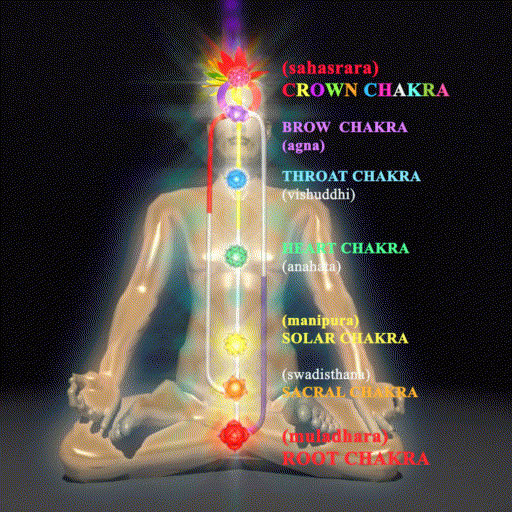
As a brief overview, the chakras are believed to be spiraling energy centers that exist within the subtle body. There are seven of them, and they lie along the spine in places where large amounts of nerves and vital organs exist. Similar to the way our brain is a large compilation of nerves, these chakras are believed to be the intersection points of energy currents within our spirit.
Each chakra rules over a particular psychological, physical, and spiritual state of being, and disruptions within the chakras are believed to lead to different types of mental, emotional, and physical illnesses.
These chakras are depicted as lotus flowers with varying numbers of petals, and each is represented by its own color. Each one also corresponds to a Sankskrit syllable mantra which is believed to activate the chakra when spoken aloud.
In order, they are:
❤ Muladhara - The Root Chakra - Connection to the Earth and the Self - Located at the base of the spine - Depicted as a red lotus with 4 petals - Mantra: LAM
🧡 Swadhisthana - The Sacral Chakra - Connection to sexuality and instinct - Located near the sexual organs - Depicted as an orange lotus with 6 petals - Mantra: VAM
💛 Manipura - The Solar Chakra - Connection to will and identity - Located in the Solar Plexus - Depicted as a yellow lotus with 10 petals - Mantra: RAM
💚 Anahata - The Heart Chakra - Connection to love and relationships - Located in the heart - Depicted as a green lotus with 12 petals - Mantra: YAM
💙 Vishuddha - The Throat Chakra - Connection to voice and communication - Located in the heart - Depicted as a blue lotus with 16 petals - Mantra: HAM
💜 Ajna - The Third Eye Chakra - Connection to spiritual awareness - Located above and between the eyes - Depicted as a purple lotus with 2 petals - Mantra: OM
🌈 Sahastrara - The Crown Chakra - Connection to Source/the Universe - Located at the top of the head - Depicted as either a purple, rainbow, or white lotus with 144,000 petals - Mantra: Silence
Along with these associations, each chakra is often associated with various crystals, herbs, and spirits.
What are the chakras within their original cultural context?
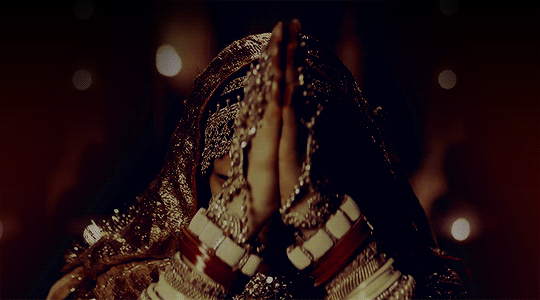
The concept of 'chakras' arose from a practice known as Tantric Yoga. This was a spiritual system that began to gain popularity in India and other eastern cultures between 600-1300 CE. Up until this point (and concurrently as well), most types of spirituality in these cultures was very transcendental - that is, they had a fundamental belief that the Divine was transcendent and inherently 'above' the natural world. Therefore, in order to commune with the divine, it was believed that the material world had to be renounced and denied, and higher states of consciousness had to be achieved in order to commune with divinity.
Tantric spirituality flipped the script. It adopted the idea that divinity was an inherent quality of the natural world, and that a person could freely commune with the divine by opening themselves up to the world around them through mindfulness and all-embracing compassion.
The philosophies and teachings of tantric yoga (loosely known as 'tantras') became extremely widespread throughout this period and dramatically shaped many emerging sects of Hinduism and Buddhism. As this philosophy spread, many different types of specific spiritual practices arose, many of which can be recognized in our Western ideas of holistic meditation - such as mantras, mudras, mandalas, and even modern Western yoga.
One such concept that gained popularity was the idea of chakras - focal points of spiritual energy in the body. However, these chakras were very different than what Westerners think of today.
There were a LOT of different traditions that arose from Tantric teachings, and each one had its own unique belief about chakras. The most obvious difference between these chakra traditions was that each one believed in a different number of chakras. Some systems had three, others had six, others had seven, others had nine, others had 10, others had 21, etc.
Each one approached the chakras a bit differently, and so each one believed in a different number of chakra centers.
What are some of the primary differences between Western Chakras and Tantric Chakras?
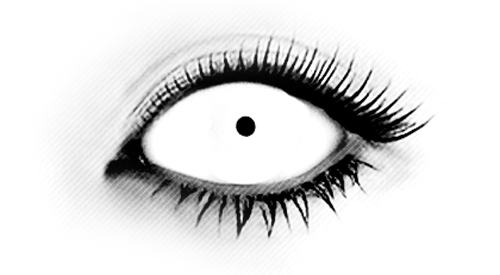
The most eye-opening difference for me was that Tantric chakras have none of the associations that Westerners believe in today. Original practitioners of Tantric spirituality did not associate specific colors with each chakra, they did not associate physical or psychological states with them, they did not associate any herbs or crystals or planets with them, and they did not even associate Sanskrit syllables with them. What's more, they didn't even believe they were located in fixed points on the body.
Loosely, they believed that the chakras - like all things spiritual - were very fluid. They could often be accessed through general areas of the body, but they definitely were not stagnant, fixed points. This also accounts for the varying number of chakras, because it was believed that the chakras would manifest in different ways depending on what traditional practice you used to approach them.
Many traditions did believe that these chakras could be depicted as lotus flowers with various petals, but these were not meant to inherently describe the individual chakra. Rather, these depictions were meant to serve as a visualization for a person to meditate on when trying to access a specific chakra.
Along with this, these traditions did not assign specific names or syllables to these chakras - at least not the ones we use today. Rather, it was believed that Sanskrit syllables carried an inherent magic or divine energy within them (similar to Kabbalistic views of the Hebrew language), and they assigned various letters and syllables to the petals of each lotus flower, which corresponded to various energies in nature.
The symbols, names, and Sanskrit syllables popularized in the West today don't even correspond to any kind of Tantric chakras. They actually correspond to the elements within certain traditions of eastern spirituality. They also are not meant to be uniquely associated with any individual chakra. Rather, these syllables were used in meditation to invoke specific elemental energies into different chakras depending on the situation.
If your tradition believed that the heart chakra could affect the relationships in your life, and your personal relationships happened to be very stagnant, you could vibrate the syllable for the Wind element and invoke that energy into your heart chakra to help your personal relationships become more dynamic. Etc.
This brings me to the final thing I'd like to talk about: Westerners are NOT using the chakras for their original purpose.
The only concrete associations that tantric traditions had for the chakras were deities. These traditions believed that each of their chakras was associated with a specific Hindu deity (though the specific order or deities listed varies between tradition and time period).
The original purpose of 'working with chakras' was to eventually invoke the energy of these specific deities into a person's chakras in order to become closer to these gods and goddesses and emulate their behavior and teachings in daily life.
How did the original concept of chakras get misconstrued in Western culture?

Oh, boy. This is a tough answer that's soaked in 1000 years of colonialism, racism, cultural and linguistic barriers, and simple misunderstandings.
But, simply put, the appropriation of tantric chakras can be narrowed down to four specific individuals.
In 1577, a spiritual teacher and academic named Purnananda Yati wrote a treatise of tantric teachings called the Shatchakra Nirupana, or roughly 'An Explanation of the Six Chakras'.
In this treatise, Purnananda lays out the modern framework we see today - six chakra centers within the human spirit, with an additional seventh chakra above the head that connects the spirit to the divine source. He based this concept off of an earlier writing from the 13th century, which also details this framework but openly acknowledges that this is just ONE tradition, and that many other traditions also exist.
In 1918, a British scholar named John Woodroffe translated Purnananda's treatise from Sanskrit into English, and unfortunately, there were many mistranslations in Woodroffe's version. This translation was what eventually gained extreme popularity throughout academic and occult circles in the West.
Throughout the 1930's, 40's, and 50's, the renowned European psychologist, Carl Jung (who you might recognize from your Psych 101 class), became fascinated with the idea of chakras and their relation to consciousness. Throughout this time period, Jung wrote extensively about potential connections between the seven chakra centers and various psychological states. This is where the chakras became associated with different states of being, such as instinct, will, and sexuality.
Finally, in 1987, an American occultist and spiritualist named Anodea Judith published a book entitled Wheels of Life. In this book, Judith talks extensively about the seven chakras, and even lists correspondences between the chakras and various herbs, crystals, elements, planets, tarot cards, deities, and archangels.
Her book became wildly popular within holistic and spiritual circles, and set in stone the way that modern neo-pagans view the chakras in the West.
So, are chakras part of a closed culture?
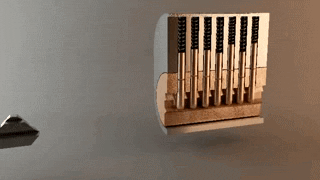
Yes and no.
Chakras as we view them in the West are, at best, a distorted and bastardized version of a beautiful, ancient belief. They were studied and theorized by many traditions for over a thousand years, and many of these traditions still exist today. Most commonly, they are still used in Shaivism, which is one of the most prevalent forms of Hinduism in the East.
Many of these living traditions ARE, in fact, closed. But more than that, to perpetuate (and worse, claim spirituality from) a distorted, white-washed version of an Eastern religious belief is just plain disrespectful and potentially racist at its worst.
That being said, though, there are certain living traditions which ARE NOT closed, such as the exceedingly popular Tibetan Buddhism. These traditions recognize many of the same teachings and are freely shared with people of any nationality or background - as long as you put in the work to learn about them.
The Main Takeaway

The chakras, as viewed in the West, are incorrect. This is not to disclaim any type of spiritual experience Westerners may have had by utilizing chakras in their practice, but I'm of the opinion that Westerners should recognize that the "chakras" they believe in don't actually have any basis in ancient spirituality.
That being said, the concept of a subtle body and energy centers within the human spirit is not unique to the Far East.
The concept of currents and centers of energy within the body can be found in cultures the world over, from India to Japan to Korea to Africa to the Middle East, and even among the Native Americans who never came into contact with these other cultures (as far as we know).
The human soul, the subtle body, and spiritual energy are concepts that supercede cultural boundaries, and if studying and utilizing them is an integral part of your craft, then I encourage you to follow your personal path and find connection with the Universe in whatever way you feel called to.
But. Perhaps developing your own unique system and beliefs about the energy centers within the body is the best course of action for us Westerners. Until we ourselves make the effort go join one of those (open) traditions, subscribing to the modern Western system of "chakras" is, in my opinion, cultural appropriation.
• • •
Brightest blessings, and best of luck 🌙
3K notes
·
View notes
Text







Some Aural Color Correspondences for your Grimoire, taken from the book "Practical Magic" by Nikki Van de Car
336 notes
·
View notes
Text
Wheel of the Year: Transition Between Sabbaths
Yule to Imbolc: Rest
During the thick of winter when it’s too cold to do anything and always dark, it’s the perfect moment in the year to rest. The focus is on relaxing, taking extra time to sleep and care for the body especially to not get sick. Winter is also ‘spa’ season because the air is so dry and harsh it’s a good time to soak in hot baths and scrub away dead skin and moisturize with protective lotion. Do not try to make new plans, yet sit home, rest and reflect.
Imbolc to Ostara: Cleansing
When winter thaws it’s a great time to clean the home and prepare for spring. Personally, I also like to do a body cleanse since I tend to eat a lot of processed (yet delicious ;-;) foods all year round. This also makes up for all the heavy foods I’ve been eating since Summer (all the BBQs) to Winter comfort foods. As I clean the home and get rid of stuff that has accumulated over the year, I clean the body. Also the focus is on cleaning the home as well. Breathing in the same air, especially if its full of dust, is really unhealthy and it’s good as the days are getting a little warmer to open up the windows for a few minutes to allow in fresh air to circulate. This is also the time of year I throw out old furniture, accumulated things and rearrange furniture in the room as well.
Ostara to Beltane: Sowing
Spring is a great time to germinate sprouts along with other seeds and clean the backyard or garden to grow plants. If you like to compost it’s a time to start mixing in the vegetable/fruit/plant scraps with the soil. Spring is also a great time to sow bigger changes in life as well. Something about the warm new season brings an air of flirtatiousness and ‘socialness’ that makes it perfect for making new friends or finding a partner. (Probably because people can finally come out of hibernation). It’s also a fantastic time to work on your image and portfolio and apply for long term jobs that begin in the summer or fall. Spring is the season for new beginnings and putting long term plans into action.
Beltane to Litha: Growing
A tradition I like to do on Beltane is repotting of plants and gardening. Repotting plants is a tradition I try to focus on every year because it’s very easy for house plants to die due to dead soil. Plus it makes the inside of the house super vibrant and lively to have fresh new soil in pots. From this point to summer solstice is the point of growth. Growth in the garden but also growth of personal goals. May and June feel like hectic months where there are so many events and opportunities to advance your work or change your social scene, that if I am not personally progressing, I focus all of my attention on my growth.
Litha to Lughnasadh: Thriving
Its the heat of summer! It’s time to get out and feel the intense hot energy and use its power to focus on goals and networking! Where I am there’s usually an exciting event every week where it’s an opportunity to make more connections and meet more friends but also since its warm and nature is so vibrant it’s time to take some days to relax and get away to enjoy the heat and life of nature. Go to the beach, go hiking, swim in a lake, sleep under the stars. Be active since the efforts will pay off.
Lugnnasadh to Mabon: Reaping
This is the time you earn what you’ve sowed both literally and metaphorically. If you have a garden its the time it will start giving back. If you are an active goer of a farmers market you will notice how beautifully abundant the stands are. If in Spring you’ve sent out tons of job applications, and in Summer got the job you’ve wanted and worked hard, then by now you should start seeing some results. If there are no results being seen it’s a time for reflection and re-strategizing. There is a second chance in this time to start again before the cold and the holiday season bulldozes through.
Mabon to Samhain: Harvest and Gather
This is the time to gather and harvest. Usually family tends to gather now since it’s the holiday season. There’s not much other than gathering to be done since family and holidays are bombarding you from all sides. Also there is an abundance of food. This is great to store for the next transition which is
Samhain to Yule: Preparation
This is the moment to prepare for winter. My wardrobe completely changes here, I take up knitting projects that were abandoned last Imbolc, and I store food and herbs for the winter to use. Also making preserves from things in the garden or hand knitting clothes make great presents for the winter holidays. This is also a time to prepare the garden for hibernation. Take in potted plants, harvest the last of the herbs and food (that are not potted). Make sure plants you do not want to die have a place to chill in the house.
1K notes
·
View notes
Text
Reading Candles for Yes/No Answers
High, steady flame: Yes
Low, steady flame: No
Short, weak flame: No
Dancing flame:Needs more focus. Reground and try again.
Violent flickering flame: Strong no. Take this as a warning if you are certain this isn’t caused by an outside force or natural defect in candle.
Sputtering/Cracking flame: There is more to your answer than a simple yes or no,
Dual flame: Thinking, wait for answer.
Flame leaning to left: Yes
Flame leaning to right: No
Candle will not light: Ask later
Candle will not go out: You are not done yet. There is more you need to hear.
Candle goes out during session: Now is not the time to ask.
3K notes
·
View notes
Text
Rose Quartz

Characteristics: light to medium toned pink; can be rough, tumbled, or shaped
Properties: aids in romance and love
235 notes
·
View notes
Text
🌿Esabats🌿
Esabats are 12/13 moon celebrations that honor the goddess in her assoziation with the moon. Traditionally covens would meet on Esabats to celebrate and work with the Goddess to bring healing and assistance for their members. Specific Goddess would be called apon during Esabats.
Month: Moon Name:
🌑January. Cold Moon/Hunger Moon
🌑Febuary. Quickening Moon/Snow Moon
🌑March. Storm Moon/SAP Moon
🌑April. Wind Moon/Pink Moon
🌑May. Flower Moon/Milk Moon
🌑June. Sun Moon/Rose Moon
🌑July. Blessing Moon/Thunder Moon
🌑August. Corn Moon/Grain Moon
🌑September. Harvest Moon
🌑October. Blood Moon
🌑November. Mourning Moon/Frost Moon
🌑December. Long Nights Moon
189 notes
·
View notes
Photo



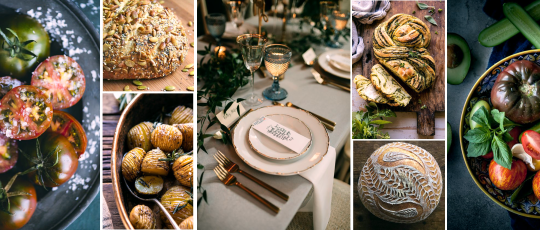
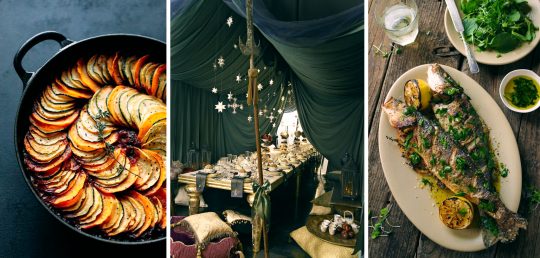
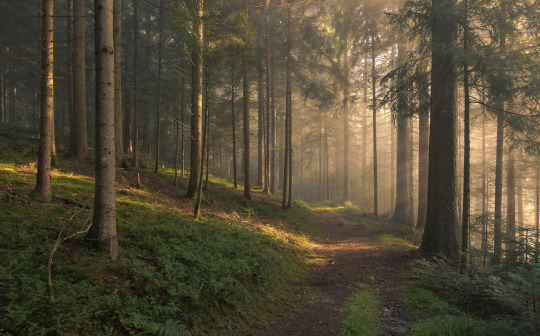
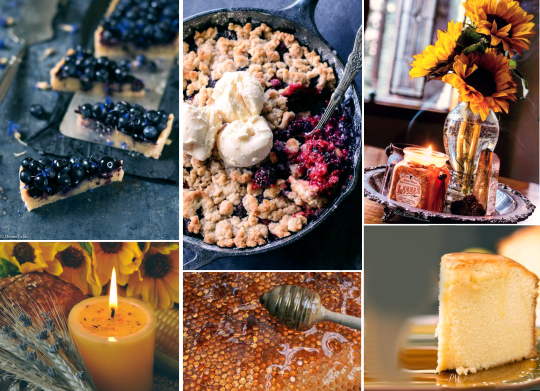
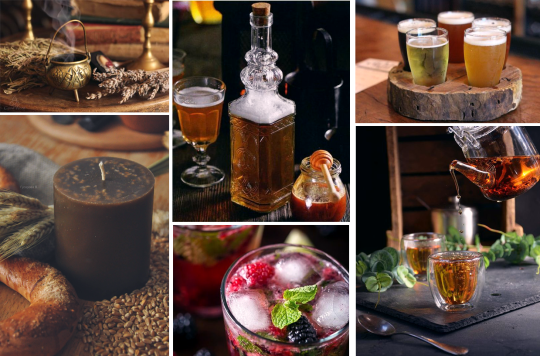

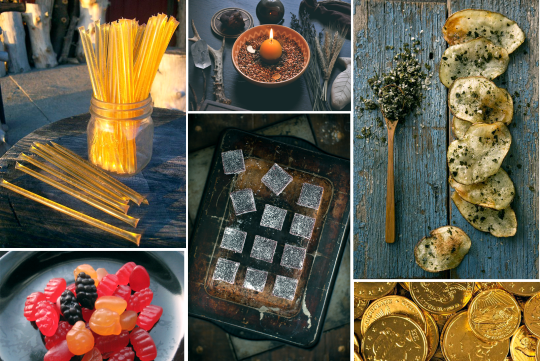
Summer Crossquarter {Lughnasadh} Fantasy Feast
I have come out of hiding to post this on time!! Have been on the ride of my life outside of tumblr, but still dedicated to fulfilling my self imposed duty this year to upgrade all of my 2016 fantasy feasts. It brings me joy each year seeing people reblog my old feasts especially as those posts did help me to visualize and manifest incredible magical celebrations with friends. However as time goes on my standards unfortunately get higher and my tastes more elaborate so I felt it was time to redo my Summer Crossquarter vision. I hope this post with included recipes below help you get grounded in the summer harvest mood!
Here are the previous feasts this year: Winter Crossquarter, Spring Equinox, Spring Crossquarter, Summer Solstice (And here was Lughnasadh 2016)
In the read more there are the recipe links and additional explanations on personal symbolism and of course the image credits! I also always plan my feasts to be vegan inclusive for those with dietary restrictions but also aim for all the food to be somewhat local which matters in these seasonal feasts since it’s celebrating local nature. Anyway there is something for everyone here.
Keep reading
534 notes
·
View notes
Text

they’re here!!! the cards are so so so beautiful!!! 🥰
i just ordered another tarot deck — this one is from the arcana: a mystic romance and i’m so so so excited to get it!! i’ve really enjoyed using the deck i have already but i feel like i would have an easier time memorizing the different arcana with a deck that’s a little more clear cut in its art.
i’m really pleased with how my readings with my forest deck have gone — i’m learning how to listen to my intuition and it shows in the rest of my life — but i’ve been eyeing this particular deck for years at this point so since i had some money left over from my visit to my partner, i went ahead and ordered it.
1 note
·
View note
Text
i just ordered another tarot deck — this one is from the arcana: a mystic romance and i’m so so so excited to get it!! i’ve really enjoyed using the deck i have already but i feel like i would have an easier time memorizing the different arcana with a deck that’s a little more clear cut in its art.
i’m really pleased with how my readings with my forest deck have gone — i’m learning how to listen to my intuition and it shows in the rest of my life — but i’ve been eyeing this particular deck for years at this point so since i had some money left over from my visit to my partner, i went ahead and ordered it.
1 note
·
View note
Note
Do you have any recommendations on how and when to cleanse a tarot deck?
I love this question.
There are a couple of ways I know that my deck needs to be cleansed, but it might be one of those things that depend on the deck and the relationship you have with your deck.
Here are some ways I know my deck needs to be cleansed:
When you ask a question, the deck gives unrelated answers or answers that you just feel like cannot be interpreted based on what you asked.
You really just don't feel much energy coming from your deck. When you pick it up, something just feels a little "off".
You don't feel connected to your deck anymore. When you make attempts to use intuition when drawing cards, you just get confused and don't feel the intuition is really there anymore.
I always cleanse my deck after doing these things:
A reading for another person, even if they weren't in the room with me, I always cleanse after doing a reading for somebody else.
If anybody other than me touches the deck, sometimes I'll even cleanse if somebody looks at my deck if I feel that person has a negative attitude.
Laying my deck on an uncleansed surface. This is just a me thing though, I believe that things pick up energies from touching or being near other things that are of different vibrations, so if I do a reading or put my deck on an uncleansed surface I'll cleanse it after.
After doing very long readings for myself or another person. Usually if I'm just asking a couple of questions I won't cleanse the deck every single time, but if I do a lengthy reading I will.
Some will cleanse their deck after every reading they do no matter how long or short it was because decks can hold energy/vibes from whatever is being asked and that tone can show up in the next reading, but that's more of a preference, I usually just cleanse maybe every other reading or every couple of readings.
How I cleanse my deck:
The short way: With sound. Literally just knock on your deck a few times, play a sound bowl around or on top of it, play some binaural beats around it, some positive songs... whatever suits you and what energy you want to feed into your deck as cleansing. Sound can vibrate and alter whatever it touches (have you seen those videos of bass blowing out people's car windows? It's kind of like that), and it's very quick and just convenient.
The medium way: Herbs, salt, crystals... Salt is known for cleansing, so laying the deck in a ring or even a bed of salt does the trick. You can do the same thing with herbs, or you can burn the herbs and run your deck through the smoke (like how you can with incense too), or let the smoke fall over your deck, just make sure you use herbs in respect to your culture and closed practices (ie. don't use the most popular herb that's been known as a closed practice: white sage, unless you are indigenous). I don't use this method often but when I do I usually use Anise, Angelica, Bay, Burdock, Carnation... those types of things because they're both protective, healing, and cleansing. Crystals, just place a crystal on top of the deck (I keep a crystal in the box with the deck), make a ring of crystals around the deck, however you want. I like to use all kinds of Quartz for this, selenite, obsidian might be a good one too, it's more for grounding and protection, but the deck I use obsidian with just fits that vibe.
The long way: Moon, Sun, Meditation, a big cleansing ritual. Usually about once or twice a year I'll lay all of my witchy items out and cleanse all of them with basically all methods I mentioned. You can also use the Sun or Moon just by laying your deck out underneath either of them, you don't have to wait for a specific moon phase if you don't want to either, any phase works. Eclipse energy is amazing too. You can do those meditations where you visualize a light surrounding your deck as you hold it, and just meditate on the light cleansing your deck. I personally don't prefer that method because I can't hold concentration for very long, but it seems to be effective for a lot of people.
The convenient way: This part is for ages 18+. One of the most convenient ways I've found to cleanse your deck is basically solo s3x magic. What you do is mast3rbate with your deck beside you or somewhere like on your stomach... and that's it. Climax is basically a surge of energy being released, so it's extremely cleansing and it helps with forming a close connection to your deck.
167 notes
·
View notes
Text
Major Arcana Tarot Meanings
The Fool – 0
Upright: Innocence, freedom, originality, adventure, travel, foolishness, carelessness, idealism, youth, spontaneity, lack of commitment, new beginnings Reversed: Recklessness, carelessness, negligence, stupidity, distraction, apathy, irrationality, lack of fun, hope or faith
The Magician – I
Upright: Power, influence, willpower, resourcefulness, skill, ability, logic, intellect, concentration and psychic powers Reversed: Manipulation, greed, unused ability, untrustworthiness, trickery, conniving, cunning, lack of mental clarity
The High Priestess – II
Upright: Desirability, unattainability, mystery, sensuality, spirituality, thirst for knowledge, mystery, subconscious, higher power, creativity, fertility Reversed: Repression of intuition, blocked psychic powers, unwanted attention, uncontrolled outbursts and sexual tension, lack of self-belief, fertility issues
The Empress – III
Upright: Pregnancy, fertility, motherhood, sensuality, nurturing, creativity, beauty, femininity, nature, harmony, art Reversed: Insecurity, infertility, lack of confidence, lack of growth, overbearing tendencies, disharmony, negligence
The Emperor – IV
Upright: Older man, stability, dependability, fatherhood, father-figure, structure, protectiveness, authority, logical, practical Reversed: Abuse of power, excessively controlling, rigidity, stubbornness, lack of discipline, lack of control, absentee father, paternity issues
The Hierophant – V
Upright: Traditional institutions, traditional values, conventional, conformity, marriage, commitment, religion, beliefs, knowledge sharing Reversed: Challenging tradition, unconventional lifestyles, unconventional relationships, reversed roles, non-conformity
The Lovers – VI
Upright: Love, soulmates, kindred spirits, perfect unions, partnerships, relationships, major choices, romance, desire, sexual connections, shared values Reversed: Disharmony, trust issues, imbalance, conflict, disconnection, lack of accountability, disunion, detachment
The Chariot – VII
Upright: Victory, overcoming obstacles, success, ambition, determination, willpower, control, self-discipline, hard work and focus Reversed: Forcefulness, lack of direction, lack of self-control, powerlessness, aggression, coercion, being blocked by obstacles
Strength – VIII
Upright: Inner strength, courage, bravery, confidence, compassion, taming, control, overcoming self-doubt Reversed: Vulnerability, self-doubt, weakness, low self-esteem, lack of confidence, feeling inadequate
The Hermit – IX
Upright: Spiritual enlightenment, soul searching, self-reflection, introspection, contemplation, inner guidance, solitude Reversed: Loneliness, paranoia, isolation, reclusiveness, withdrawal, anti-social, restrictive, paralyzed by fear.
The Wheel of Fortune – X
Upright: Good luck, destiny, change, karma, soulmates, decisive moments, cycles of life, fate, fortune, upheaval, chance Reversed: Bad luck, upheaval, disorder, external forces, lack of control, disruption, unwelcome change, delays, set backs, karma
Justice – XI
Upright: Justice, karmic justice, consequences, legal disputes, law, truth, honesty, integrity, cause and effect, life lessons Reversed: Injustice, karmic retribution, dishonesty, corruption, lack of accountability, dishonesty, unfairness, karmic avoidance
The Hanged Man – XII
Upright: Feeling trapped, confined, self-limiting, uncertainty, lack of direction, needing release, letting go Reversed: Discontentment, apathy, disinterest, stagnation, impulsiveness, negative patterns, detachment
Death – XIII
Upright: Spiritual transformation, new beginnings, letting go, endings, change, transition, sudden or unexpected upheaval Reversed: Inability to move forward, fear of beginnings, repeating negative patterns, resisting change, dependency
Temperance – XIV
Upright: Balance, peace, patience, moderation, inner calm, perspective, tranquillity, harmonious relationships, soulmates Reversed: Imbalance, self-indulgence, excess, clashing, lack of perspective, discord, antagonism, recklessness, hastiness
The Devil – XV
Upright: Addiction, depression, mental health issues, secrecy, obsession, cheating, dependency, bondage, materialism, sexuality, powerlessness, hopelessness, abuse, violence, assault Reversed: Detachment, independence, overcoming addiction, freedom, revelation, reclaiming power, reasserting control
The Tower – XVI
Upright: Chaos, destruction, sudden upheaval, trauma, unexpected change, disaster, loss, tragedy, revelations, confusion, pain, divorce, abuse, violence, bankruptcy, natural disasters, inevitable endings Reversed: Resisting change, averting disaster, avoiding tragedy, delaying the inevitable, avoiding loss, lack of insight, codependence
The Star – XVII
Upright: Hope, inspiration, creativity, calm, contentment, renewal, serenity, spirituality, healing, positivity Reversed: Hopelessness, despair, focusing on the negative, lack of faith, lack of inspiration, lack of creativity, boredom, monotony
The Moon – XVIII
Upright: Intuition, illusion, dreams, vagueness, instability, deception, anxiety, fear, misconception, subconscious, insecurity, clouded Reversed: Releasing fear, unveiling secrets, subsiding anxiety, truth, regaining composure, self-deception, blocked intuition
The Sun – XIX
Upright: Positivity, freedom, fun, success, optimism, vitality, joy, confidence, self-expression, good luck, enthusiasm, happiness, truth, openness, pregnancy Reversed: Lack of enthusiasm, excessive enthusiasm, sadness, pessimism, unrealistic expectations, ego, conceitedness, oppression, infertility
Judgement – XX
Upright: Judgement, self-evaluation, awakening, renewal, composure, decisiveness, homesickness, snap judgements, apportioning blame, forgiveness, judgemental Reversed: Indecisiveness, self-doubt, malicious gossip, lack of self-awareness, unwillingness to learn karmic lessons, unfair blame, false accusations
The World – XXI
Upright: Success, achievement, accomplishment, travel, completion, fulfillment, sense of belonging, wholeness Reversed: Lack of success, stagnation, lack of achievement, disappointment, burden, lack of completion
7K notes
·
View notes
Text
I got my first tarot deck!! it’s the tarot of the secret forest deck by lucia mattioli :) i’m really excited to cleanse it and start working with it!
1 note
·
View note
Text
Tarot Spread: Self Work
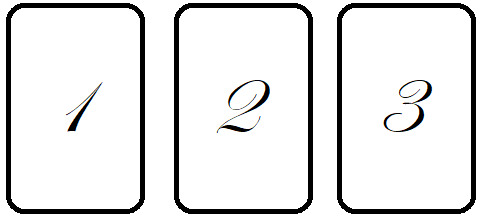
Card 1 - Past: What aspect in your life you’re currently clinging to; what you may need to let go of; what may need healing still.
Card 2 - Present: What you should focus on; what your Ego needs to know NOW.
Card 3 - Future: What you should be on the look out for; What your Higher Self is trying to tell you.
460 notes
·
View notes
Text
10 Herbs For Basic Natural Remedies
Aloe: Soothing and highly moisturizing, a mask made from Aloe is absolutely heavenly. Mix Aloe with Honey and Seaweed to soothe, moisturize and detoxify your skin. Aloe is also known to treat wounds such as scrapes and burns but is also good for general dermatitis. When buying the gels in store, be careful to read the label to make sure there aren’t any harsh and/ or cosmetic additives in it.
Basil: A wonderful detoxifier and circulation promotor, crush a handful of leaves and brew a hot tea for a few minutes. Let cool. Once cooled, splash your face or wipe it down with a cotton pad or face cloth.
Burdock: Burdock does wonders for dry, itchy skin, especially on the scalp. Like Catnip, it aids with relieving dandruff and promotes healthy scalp skin. For best results, purchase Burdock in its oil form and massage a bit onto your scalp after you wash your hair, while your hair is still damp. The fatty acids and phytosterols will keep your scalp happy and healthy.
Chamomile: A very gentle cleanser for oily skin especially when combined with Thyme. When combined with Fennel and brewed as a tea, it aids in digestion, relieving nausea, diarrhea, vomiting and indigestion.
Lavender: Like Aloe, Lavender is very soothing and an antiseptic. Wonderful for burns, treating infections, and in general dermatitis. A mild antidepressant and sedative, Lavender is also known to alleviate symptoms of depression and anxiety.
Mint: Mint gum and toothpaste? There’s a reason for that! Antibacterial and anti-inflammatory, Mint is wonderful for oral health. Mint also aids in digestion, improves respiratory conditions like asthma, and aids in relieving water retention. When used as an astringent, Mint coolly freshens up the skin and aids in getting rid of acne. Also aids in relieving headaches and migraines.
Rose: A very gentle astringent when applied topically and is a wonderful anti-inflammatory and reducer of acne. Full of a variety of vitamins, minerals, and antioxidants, Rose is a well rounded addition to any herbalist’s repertoire.
Rosemary: A rise made from Rosemary adds beautiful shine to hair, strengthens damaged hair and soothes dry scalps. A rich source in antioxidants and anti-inflammatory compounds, Rosemary is also known to boost the immune system and improve blood circulation. Also known to be a cognitive stimulation, Rosemary can also aid in improving memory performance and quality.
Sage (Kitchen): An astringent of Sage mixed with Witch Hazel or even Apple Cedar Vinegar cleanses the skin efficiently yet gently due to it being rich in anti-inflammatory and antioxidant compounds. Also aids in supporting oral health (reducing plaque), easing menopausal symptoms and aids in promoting brain health, improving mood
Turmeric: A brisk, cleansing mask, mix together turmeric powder, rice flower and plain yogurt. Let sit on the face for 15-20 mins (or until dry) and then, while rinsing off, gently scrub in circular motions. Antioxidant and anti-inflammatory.
2K notes
·
View notes



